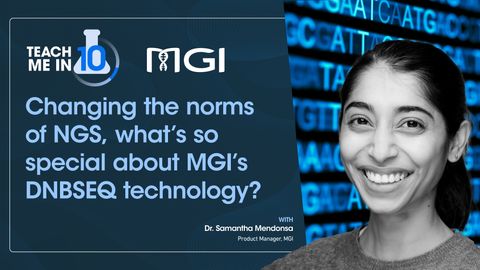Introduction
The European Union (EU) is the world’s leading wine producer, accounting for approximately 45% of the global wine-growing area.1 This dominant role places European viticulture at the heart of the global wine industry, supporting millions of jobs and playing a key role in the social and environmental sustainability of many European regions. Today, however, this position is increasingly threatened by climate change and the spread of pests and pathogens, which are affecting both the quantity and quality of grape production.2, 3
Historically, chemical pesticides have been widely used to protect grapevines from pests and diseases that threaten yields and fruit quality. However, increasing evidence shows that overreliance on chemical treatments can lead to environmental degradation, adverse human health conditions and the decline of beneficial insects. As a result, there is growing interest in sustainable and integrated approaches to vineyard protection that reduce chemical inputs while maintaining productivity and grape quality.
Advances in genomics and sequencing technologies are now providing promising solutions to these challenges. Through genomic research, scientists are developing more resilient grape varieties, enabling targeted pest management and promoting biodiversity preservation. These innovations are essential in addressing the growing challenges posed by climate change, evolving pest pressures and changing consumer expectations.
This article explores real-world examples and future opportunities for sustainable viticulture through genomics, demonstrating how cutting-edge science is shaping a more sustainable, resilient and profitable wine industry.
Why sustainable pest management matters
The Food and Agriculture Organization (FAO) estimates that between 20% and 40% of global crop yield is lost to pests annually. Each year, plant diseases alone cost the global economy around $220 billion each year, while invasive insects account for approximately $70 billion in damages.4 This yield loss is expected to be magnified by climate change. Projections indicate that for every degree of global mean surface warming, crop losses from insect pests could increase by between 10% and 25%.5
Traditionally, crop pests have been controlled primarily through pesticide applications. While effective in the short term, this approach has raised significant concerns due to its environmental and health impacts. For instance, recent research across eight European countries has shown that landscape-level pesticide exposure significantly reduces the growth, weight and reproductive success of bumblebee colonies, with high-risk sites experiencing up to a 47% drop in queen production and a 52% decline in overall colony output.6 Importantly, pesticide exposure is also associated with a range of serious human health effects – particularly among agricultural workers and nearby populations – including cancer, neurodegenerative diseases like Alzheimer’s and Parkinson’s, reproductive disorders and respiratory illnesses.7
In response to these challenges, the European Union’s Farm to Fork Strategy mandates a 50% reduction in pesticide use by 2030, setting a clear path toward more sustainable agricultural practices.8 Sustainable pest management requires a paradigm shift toward precision-based, targeted strategies that minimize environmental impact. By harnessing innovations in genomics, researchers and growers are gaining new tools to better understand plant resilience and susceptibility. These insights are opening up opportunities to identify disease- and pest-resistant traits, improve breeding outcomes and support the development of more sustainable and adaptable crop varieties.
The role of sequencing in modern agriculture
Sequencing technologies are revolutionizing agriculture by providing essential tools to address the growing challenges posed by pests, diseases and climate change. Genomic approaches enable the rapid development of disease-resistant and climate-resistant crops9, 10, support the monitoring and management of plant pathogens and pests11, aid biodiversity conservation12 and help reduce reliance on chemical inputs13.
A key driver behind the growing adoption of sequencing in agriculture is the increasing accessibility and affordability of this technology. Recent advances in sequencing platforms have enabled even small teams and local researchers to engage in genomic research. Platforms like MGI’s DNBSEQ™ offer a cost-effective, scalable solution that lowers barriers to entry in agricultural genomics, facilitating broader implementation across the industry.
Continue reading below…
Breeding better grapes at Lincoln University
In Central Otago, New Zealand, viticulturists are increasingly focused on developing grape varieties that require fewer chemical treatments to thrive. At the forefront of this effort is Lincoln University, in collaboration with the Bragato Research Institute, where researchers are using sequencing technologies to identify key genetic traits that confer resistance to diseases like powdery mildew and downy mildew.
Three years ago, DNBSEQ™ sequencing was introduced to the Department of Wine, Food and Molecular Biosciences at Lincoln University to support their study on grape breeding14. DNBSEQ™ sequencing has enabled the team to conduct large-scale studies aimed at breeding grape varieties with improved flavor, enhanced yield and resistance to common pests and diseases. These advancements are expected to transform wine production and contribute to a more sustainable future.
“At the moment, we have, with Bragato, produced a number of Pinot Noir and Sauvignon Blanc genomes that we’re now starting to interrogate to understand how different clones vary, and whether we can identify genetic differences that could eventually lead to the development of more tolerant vines,” explains Associate Professor Chris Winefield, from the Department of Wine, Food and Molecular Biosciences at Lincoln University.
Previously, the team relied on international sequencing providers to process samples and return the data, but this approach was slow and expensive. With the adoption of MGI’s DNBSEQ™ sequencing technology, this process has become far more efficient and affordable. “We can process maybe 200 samples in a fortnight. We’re looking in the near future to move that to 50,000 samples a year. We can’t do that without MGI’s support,” said Chris Winefield.
The cost-effective, scalable nature of MGI’s platform has enabled smaller research teams to rapidly expand their genomic efforts. “The introduction of MGI sequencing tools like the DNBSEQ-G400 has really helped democratize sequencing for small teams like mine. The cost is highly competitive, especially with the new Q40 chemistry. It’s allowing us to scale at a pace we couldn’t have imagined before,” adds Chris.
Democratizing genomics across agricultural sectors
Lincoln University’s work with grape genomics is just one example of how affordable sequencing is transforming agricultural research. Increasingly, accessible genomic tools are enabling regions around the world to improve sustainability, productivity and climate resilience.
Thailand’s National Omics Center is also leveraging DNBSEQ™ sequencing technology for mangrove biodiversity preservation. By sequencing mangrove genomes, researchers are gaining critical insights into the genetic diversity of these ecosystems, which play a vital role in coastal protection and local economies.15
In Australia, food sustainability programs are increasingly turning to sequencing to address challenges in crop production and food security. In collaboration with Prof. Rajeev Varshney at Murdoch University, MGI has supported large-scale sequencing projects to identify drought- and disease-resistant traits. These efforts have led to improved crop varieties in developing countries and the establishment of a new advanced genomics platform in Western Australia to support local fruit crop breeding.16
Sequencing technologies like DNBSEQ™ are empowering smaller agricultural sectors and independent producers to innovate, improve sustainability and preserve biodiversity. These advances are helping bridge the gap between large commercial operations and smaller, localized agricultural initiatives, driving a more inclusive and resilient agricultural future.
From local success to global standard
New Zealand’s genomic approach offers a valuable blueprint for meeting global food security and sustainability goals. By harnessing genomics to improve crop resilience, reduce chemical inputs and enhance biodiversity, this model is paving the way for more sustainable viticulture practices worldwide.
As climate change and environmental pressures continue to intensify, replicating this approach will be essential. With mounting evidence of the harms linked to conventional pesticides, and growing international mandates to phase them out, genomics is a key approach to meet these regulatory and environmental demands while ensuring agricultural productivity.
By building on successful models like those pioneered in New Zealand, the global community can take decisive steps toward a more resilient, sustainable and food-secure future.
References
1. Vineyards in the EU – statistics. Accessed June 19, 2025. https://ec.europa.eu/eurostat/statistics-explained/index.php?title=Vineyards_in_the_EU_-_statistics
2. Ayogu P, Teixeira A, Gerós H, Martins V. Identification of grape berry indigenous epiphytic yeasts with in vitro and in vivo antagonistic activity towards pathogenic fungi. OENO One. 2023;57(1):253-264. doi:10.20870/oeno-one.2023.57.1.7273
3. Schusterova D, Hajslova J, Kocourek V, Pulkrabova J. Pesticide Residues and Their Metabolites in Grapes and Wines from Conventional and Organic Farming System. Foods. 2021;10(2):307. doi:10.3390/foods10020307
4. New standards to curb the global spread of plant pests and diseases. Newsroom. Accessed June 19, 2025. https://www.fao.org/newsroom/detail/New-standards-to-curb-the-global-spread-of-plant-pests-and-diseases/en
5. Deutsch CA, Tewksbury JJ, Tigchelaar M, et al. Increase in crop losses to insect pests in a warming climate. Science. 2018;361(6405):916-919. doi:10.1126/science.aat3466
6. Nicholson CC, Knapp J, Kiljanek T, et al. Pesticide use negatively affects bumble bees across European landscapes. Nature. 2024;628(8007):355-358. doi:10.1038/s41586-023-06773-3
7. Ahmad MF, Ahmad FA, Alsayegh AA, et al. Pesticides impacts on human health and the environment with their mechanisms of action and possible countermeasures. Heliyon. 2024;10(7). doi:10.1016/j.heliyon.2024.e29128
8. Farm to Fork targets – Progress – European Commission. Accessed June 19, 2025. https://food.ec.europa.eu/plants/pesticides/sustainable-use-pesticides/farm-fork-targets-progress_en
9. Sinha P, Singh VK, Bohra A, Kumar A, Reif JC, Varshney RK. Genomics and breeding innovations for enhancing genetic gain for climate resilience and nutrition traits. Theor Appl Genet. 2021;134(6):1829-1843. doi:10.1007/s00122-021-03847-6
10. Yang B, Li C, Li R, et al. A Dataset of SNPs Related to Downy Mildew Resistance in East Asian Grape Based on GBTS. Sci Data. 2025;12(1):619. doi:10.1038/s41597-025-04765-8
11. Islam T. Genomic surveillance for tackling emerging plant diseases, with special reference to wheat blast. CABI Reviews. 2024;19(1). doi:10.1079/cabireviews.2024.0050
12. Theissinger K, Fernandes C, Formenti G, et al. How genomics can help biodiversity conservation. Trends in Genetics. 2023;39(7):545-559. doi:10.1016/j.tig.2023.01.005
13. Sundström JF, Berlin A, Phuong NK, Karlsson M, Andreasson E. New genomic techniques can contribute to reduced pesticide usage in Europe. PLANTS, PEOPLE, PLANET. 2024;6(6):1215-1223. doi:10.1002/ppp3.10559
14. Lizamore D, Bicknell R, Winefield C, Barrell P. Producing and (epi)genotyping a large collection of intravarietal diversity for grapevine improvement. XIII International Symposium on Grapevine Breeding and Genetics, Pioneering Wines (PIWIs) – Innovation and Tradition, Abstract Book: 10th – 15th July 2022, Institute for Grapevine Breeding Geilweilerhof I Siebeldingen/Germany. Published online 2022:54. doi:10.5073/20220612-152952
15. Pootakham W, Naktang C, Sonthirod C, et al. Chromosome-level genome assembly of Indian mangrove (Ceriops tagal) revealed a genome-wide duplication event predating the divergence of Rhizophoraceae mangrove species. The Plant Genome. 2022;15(3):e20217. doi:10.1002/tpg2.20217
16. Garg V, Barmukh R, Huang Y, et al. An Australian chickpea pan-genome provides insights into genome organization and offers opportunities for enhancing drought adaptation for crop improvement. Plant Biotechnology Journal. n/a(n/a). doi:10.1111/pbi.70192

